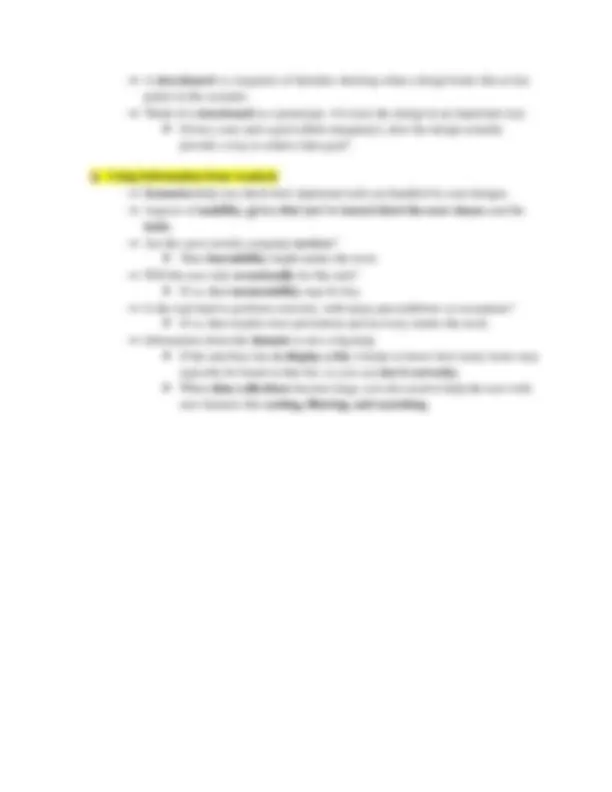



Study with the several resources on Docsity

Earn points by helping other students or get them with a premium plan


Prepare for your exams
Study with the several resources on Docsity

Earn points to download
Earn points by helping other students or get them with a premium plan
Community
Ask the community for help and clear up your study doubts
Discover the best universities in your country according to Docsity users
Free resources
Download our free guides on studying techniques, anxiety management strategies, and thesis advice from Docsity tutors
The process of generating designs and design patterns. It emphasizes the importance of using paper as a design medium and generating many ideas without fixating on an early vision. The document also introduces the concept of scenarios, which are concrete stories that set up a situation involving a user with a goal to satisfy, and then follows the user through the tasks they do to satisfy that goal. Scenarios can be used to create the first prototype of a design.
Typology: Lecture notes
1 / 2

This page cannot be seen from the preview
Don't miss anything!


Sketching Designs → Paper is really a wonderful design medium; it’s cheap, it’s flexible, it’s easy to use. → Lay out many ideas on a big table or tape them up on a wall, stand back, point at them, talk about them, move them around. → Generate many ideas. → Don’t fixate on an early vision and stop brainstorming. → Focus attention on the issues that matter in early design, without distracting you with details like font, color, alignment, whitespace, etc. → Improves the feedback you get from users. → Hand-sketch design seems less finished, less set in stone, and more open to suggestions and improvements. Scenario → take your task analysis and turn it into stories → Scenario is a concrete, realistic story that sets up a situation involving a user with a goal to satisfy, and then follows the user through the tasks they do to satisfy that goal. → A scenario is the task-analysis equivalent of a persona, as a fictitious, concrete example of an abstract task. → A scenario can be used to create the first prototype of your design (of a sort): a storyboard Storyboards
→ A storyboard is a sequence of sketches showing what a design looks like at key points in the scenario. → Think of a storyboard as a prototype → it tests the design in an important way: ➢ Given a user and a goal (albeit imaginary), does the design actually provide a way to achieve that goal? Using Information from Analysis → Scenarios help you check how important tasks are handled by your designs. → Aspects of usability , given what you’ve learned about the user classes and the tasks. → Are the users mostly computer novices? ➢ Then learnability might matter the most. → Will the user only occasionally do this task? ➢ If so, then memorability may be key. → Is the task hard to perform correctly, with many preconditions or exceptions? ➢ If so, then maybe error prevention and recovery matter the most. → Information about the domain is also a big help. ➢ If the interface has to display a list , it helps to know how many items may typically be found in that list, so you can size it correctly. ➢ When data collections become large, you also need to help the user with new features like sorting, filtering, and searching.